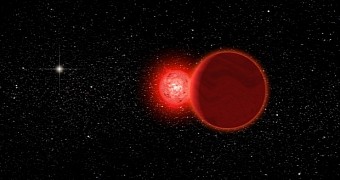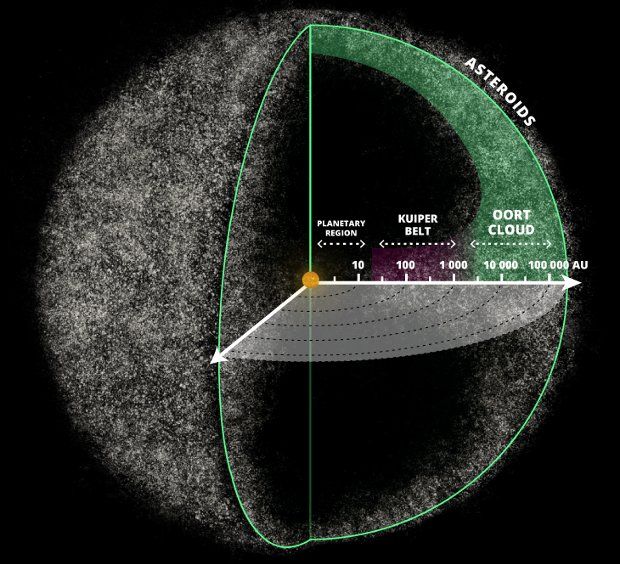These days, we're pretty excited to have an asteroid fly by our planet. The thing is that, as it turns out, there are way cooler cosmic encounters that can happen. In fact, had evolution worked just a tad faster than it did, we might have witnessed one ourselves.
Thus, astronomers say that, about 70,000 years ago, a star brushed past our Solar System. Even cooler, they argue that, according to their calculations, it is likely that this star did not just move by our cosmic home but flew through the Oort Cloud that sits at the edge of the Solar System.
It is believed that, when this happened, our ancestors got to observe the star with the naked eye. This is because, while cruising through the Oort Cloud, the star likely flared up because of magnetism and became several thousand times brighter than it usually is.
“It is magnetically active, however, which can cause stars to ‘flare’ and briefly become thousands of times brighter. It is possible that Scholz’s star may have been visible to the naked eye by our ancestors 70,000 years ago for minutes or hours at a time during rare flaring events,” astronomers say.
Crash course in the Solar System's anatomy
As shown in the image below, this so-called Oort Cloud that scientists claim got hit by a star tens of thousands of years ago is basically a sphere that sits at the edge of the Solar System and marks its cosmographical boundary.
Having taken the time to study it with the help of telescopes and all sorts of other instruments, astronomers found that the Oort Cloud comprises about an army's worth of icy bodies, the majority of which measure about one mile (1.6 kilometers) across.
The Oort Cloud is estimated to encompass the Solar System at a distance of about 0.8 light-years from the Sun. This might sound like a whole lot, but as far as space distances go, it really isn't. Not when the star closest to us, Proxima Centauri, is a jaw-dropping 4.2 light-years away.
Meet the star that visited us 70,000 years ago
In a paper in the Astrophysical Journal Letters, study leader Eric Mamajek with the University of Rochester in the US and colleagues explain that, while studying the behavior of a low-mass star system dubbed Scholz's star, they found that, eons ago, this celestial body visited our Solar System.
More precisely, the astronomers say that the star's current velocity and trajectory indicate that about 70,000 years back Scholz's star flew right by our cosmic home, most likely even pushed through the Oort Cloud at our Solar System's boundary.
The reason this star did not forever transform the Oort Cloud when it moved through it is that it only interacted with its outer layer, scientist Eric Mamajek and fellow researchers say. Had it made it all the way to the Oort Cloud's inner region, it would have birthed a meteor shower.
Presently, Scholz's star, whose mass is merely 8% that of our Sun, finds itself at a distance of about 20 light-years from Earth. Together with a companion even smaller than itself, it forms a binary system located in the constellation of Monoceros.
Like plenty of other celestial bodies, this star that visited us 70,000 years back has a fairly complicated official name, i.e. WISE J072003.20 - 084651.2. It is referred to as Scholz's star to honor the German astronomer Ralf-Dieter Scholz, who discovered it towards the end of 2013.

 14 DAY TRIAL //
14 DAY TRIAL // 

